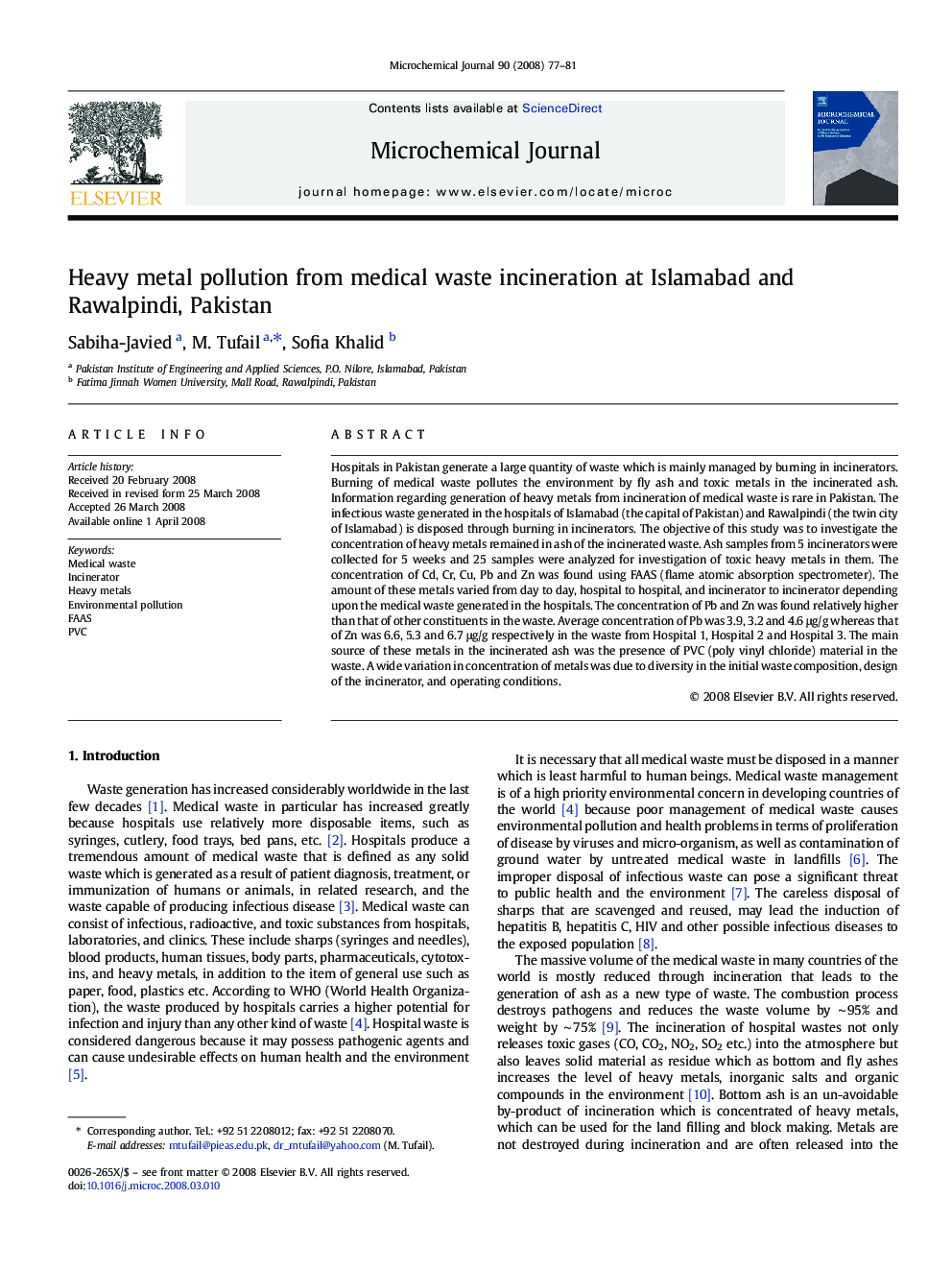| Article ID | Journal | Published Year | Pages | File Type |
|---|---|---|---|---|
| 1228269 | Microchemical Journal | 2008 | 5 Pages |
Hospitals in Pakistan generate a large quantity of waste which is mainly managed by burning in incinerators. Burning of medical waste pollutes the environment by fly ash and toxic metals in the incinerated ash. Information regarding generation of heavy metals from incineration of medical waste is rare in Pakistan. The infectious waste generated in the hospitals of Islamabad (the capital of Pakistan) and Rawalpindi (the twin city of Islamabad) is disposed through burning in incinerators. The objective of this study was to investigate the concentration of heavy metals remained in ash of the incinerated waste. Ash samples from 5 incinerators were collected for 5 weeks and 25 samples were analyzed for investigation of toxic heavy metals in them. The concentration of Cd, Cr, Cu, Pb and Zn was found using FAAS (flame atomic absorption spectrometer). The amount of these metals varied from day to day, hospital to hospital, and incinerator to incinerator depending upon the medical waste generated in the hospitals. The concentration of Pb and Zn was found relatively higher than that of other constituents in the waste. Average concentration of Pb was 3.9, 3.2 and 4.6 μg/g whereas that of Zn was 6.6, 5.3 and 6.7 μg/g respectively in the waste from Hospital 1, Hospital 2 and Hospital 3. The main source of these metals in the incinerated ash was the presence of PVC (poly vinyl chloride) material in the waste. A wide variation in concentration of metals was due to diversity in the initial waste composition, design of the incinerator, and operating conditions.
